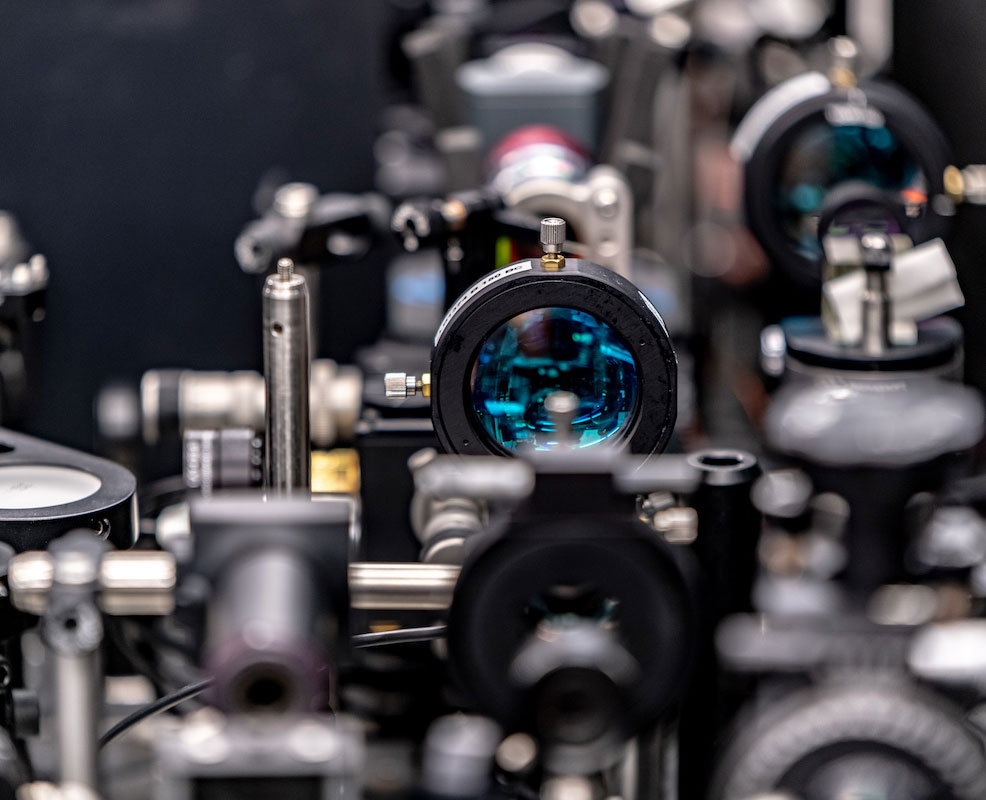
24th September 2021 New optical transistor is up to 1,000 times faster, at lowest switching energy possible A research team led by IBM and the Skolkovo Institute of Science and Technology (Skoltech), Russia, has created an extremely energy-efficient optical switch. This could replace electronic transistors in a new generation of computers.
Today, modern electronic computing uses electrons moving through transistors to perform calculations. But in the coming years, an entirely new class of computers may emerge, using photons (light) instead of electrons, which move faster and can be packed into a tighter space. Optical transistors have already been demonstrated in the lab, and entire optical computers may one day be commonplace – allowing orders of magnitude improvements in processing speed, while giving off little or no heat. Current optical technology has downsides, however. Although excellent over long distances (such as in fibre optic data transmission), it quickly loses energy at short distances compared to using electrons. Light is currently better at 3 m (10 ft) or more, a scale that is rather large and impractical when it comes to a desktop computer or laptop. This week, a new optical device has been revealed that is so energy efficient, it takes only a few photons to switch. In addition to direct power saving, the switch requires no cooling, and works at room temperature. At 1 trillion operations per second, it is up to 1,000 times faster than today's top-of-the-range transistors. The breakthrough is published in the journal Nature. "In fact, in our Skoltech labs we achieved switching with just one photon at room temperature," added Professor Pavlos Lagoudakis, who heads the Hybrid Photonics Labs at Skoltech. "That said, there is a long way to go before such proof-of-principle demonstration is utilised in an all-optical co-processor." Since a photon is the smallest particle of light that exists in nature, there is really not much room for improvement beyond that in terms of power consumption. Most modern electrical transistors take tens of times more energy to switch, and those that use single electrons to achieve comparable efficiencies are far slower. In addition, because the new switch conveniently works at a normal room temperature, it circumvents the need for bulky cooling equipment that would otherwise consume power and factor into the operating costs. The device relies on two lasers to set its state to "0" or "1" and to switch between them. The researchers used several tweaks to ensure low power consumption – including exploitation of tiny vibrations in the semiconducting polymer's molecules; pinpointing the optimal wavelength to tune their laser and implementing a new measurement scheme enabling single-shot detection; and suppressing noise from the device's "background" emission. In the larger scheme of things, the researchers see their new switch as but one in the growing toolkit of all-optical components they have been assembling over the past few years. Among other things, it includes a low-loss silicon waveguide for shuttling optical signals back and forth between transistors. The development of these components takes us ever closer to the mass production of complete optical computers that would manipulate photons instead of electrons, resulting in vastly superior performance and lower power consumption.
Comments »
If you enjoyed this article, please consider sharing it:
|







